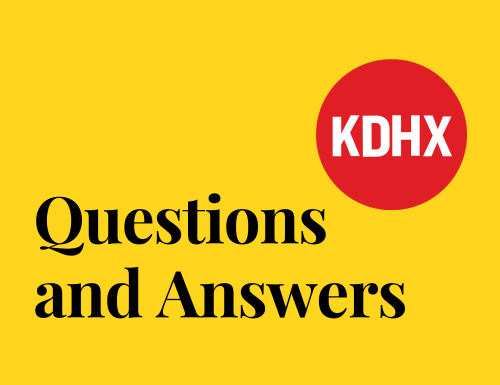
Symphony Preview: We open in...Stifel
By Chuck Lavazzi
Written By Chuck Lavazzi
[Preview the music with my Spotify playlist.]
This weekend (Saturday and Sunday, September 23 and 24), the St. Louis Symphony Orchestra, with Music Director Stéphane Denève at the helm, will do something it hasn’t done in over a half-century: perform in the Kiel Opera House. Or as it is now known, the Stifel Theatre.
It’s a matter of necessity rather than nostalgia since Powell Symphony Hall, the orchestra’s home since 1968, is closed for extensive renovation and expansion until 2025. The new season will, as a result, be a wanderjahr for the orchestra with concerts not just at Stifel but also at the Touhill Center on the University of Missouri–St. Louis campus. There will also be chamber concerts at the Sheldon Concert Hall and the Pulitzer Center and a performance of Gabriel Fauré’s transcendent “Requiem” at the Cathedral Basilica on Lindell.
 |
| Richard Strauss, age 24 |
The program for the opening concerts is a varied and festive one, with the beloved Violin Concerto by Felix Mendelssohn (1809–1847), the overture to “The Magic Flute” by Wolfgang Amadeus Mozart (1756–1791), and three popular examples of the genre known as “program music”. Two are by that master of the genre Richard Strauss (1864–1949) and the third is by France’s Paul Dukas (1865–1935), whose music often doesn’t get the respect it deserves.
Sometimes used dismissively, “program music” refers to any composition either inspired by or intended to depict something nonmusical. Said inspiration can come from the dramatic, literary, or visual arts, although history, nature, and even architecture figure prominently as well. That covers a lot of territory, as this weekend’s program demonstrates.
The concerts open with Strauss’s “Don Juan.” First performed in 1889, this second in a long series of tone poems takes its inspiration from Paul Heyse’s play “Don Juans Ende” (based on an unfinished verse play by Nicolaus Lenau), which the composer saw in Frankfurt in 1885. As Bryan Gilliam and Charles Youmans write in Grove Online, the work “earned Strauss his international reputation as a symphonic composer” thanks to “its provocative subject matter, dazzling orchestration, sharply etched themes, novel structure, and taut pacing.”
It also nearly killed him. He had just been appointed Kapellmeister to the Grand Duke of Saxe-Weimar-Eisenach in Weimar, had just met his future wife, and was becoming highly regarded as a conductor as well as a composer. “All this feverish activity,” observe Gilliam and Youmans, “left Strauss exhausted, and by the end of the 1891–2 season he had become gravely ill.” Fortunately he spent the following winter recuperating in Greece and Egypt and was back at Weimer, hale and hearty, in 1893.
He was still in fine fettle two years later when he wrote the piece that closes the program, “Till Eulenspiegel’s Merry Pranks.” Based on the exploits of the popular “trickster” character from German folklore, the work is beloved by audiences and critics alike. It can also strike fear in the hearts of even the best horn players thanks to the wide-ranging solo for that instrument that opens the piece. Roger Kaza nailed it the last time the SLSO played “Till Eulenspiegel” in 2012, so I expect it’s in good hands.
 |
| Illustration for "Der Zauberlehrling", 1882 by Ferdinand Barth |
Before that, it’s the popular 1897 tone poem "The Sorcerer's Apprentice" by Paul Dukas. Inspired by "Der Zauberlehrling," a 1797 poem by Goethe, the piece is a vivid portrait of a magician in training whose attempts to transform a broom into a water carrier lead to disaster. It's filled with brilliant orchestral details, from the delicate opening measures for flutes, clarinet, harps, and strings, to the comically animated broom depicted by the bassoons, to the massive orchestral climaxes as the hapless apprentice tries to bring that broom under control.
Those of you who have seen Walt Disney’s 1940 animated classic “Fantasia” may find it hard not to keep picturing Mickey Mouse as the hapless apprentice.
The overture to “The Magic Flute” opens the second half of the evening. Written towards the end of the composer's sadly brief life (Mozart had only a few months to live when it premiered in September of 1791), “The Magic Flute” was intended not for an audience of nobles at court but rather for ordinary folks at a suburban theater where the repertoire ran more towards lighter fare. A singspiel with spoken dialog instead of recitatives and a text in German instead of the fashionable Italian, the work is the fantastic tale of heroic prince Tamino and princess Pamina, daughter of the Queen of the Night, who must undergo a series of magical trials at the court of Sarastro, High Priest of the Sun, before they can attain enlightenment and be united in marriage. Accompanying Tamino in his quest is the comic bird catcher Papageno.
Mozart was a Master Mason in the "Zur Wohltätigkeit" ("Beneficence") Lodge in Vienna and “The Magic Flute” is stuffed full of Masonic symbolism, including frequent use of the number three. That includes the three chords that open the overture. None of the tunes in the opera show up in the overture, though, so one need not know the secret handshake to appreciate the lively music.
The big event of the evening is the Violin Concerto by Felix Mendelssohn (1809–1847). Mendelssohn, like Mozart, died before age 40 and his Violin Concerto, like Mozart’s opera, was composed near the end of his all too brief life. Like “The Magic Flute,” the concerto was also a great success and remained so ever since.
 |
| Portrait of Mendelssohn by James Warren Childe, 1839 en.wikipedia.org |
That said, the concerto was a long time in coming. Although the composer announced his intention to write it in a letter to his friend, the violinist Ferdinand David, in 1838, it wasn't until March of 1845, two years before the composer’s death, that the E minor concerto finally saw the light of day. Mendelssohn was ill at the time, so the Danish composer Niels Gade conducted the Leipzig Gewandhaus Orchestra (where Mendelssohn had been Principal Conductor since 1835) with David as the soloist. Which was only fair, as the composer sought David's technical and compositional advice throughout the concerto's six-year gestation period.
This weekend’s soloist is the internationally renowned Hilary Hahn. I saw her most recently at the Bravo! Vail festival in July, where her Tchaikovsky Violin Concerto (with the Philadelphia Orchestra under Yannick Nézet-Séguin) was warmly received. She hasn’t appeared with the SLSO since 2003, her planned 2020 visit having been a victim of the radically downsized season made necessary by COVID-19. I look forward to seeing what she does with the Mendelssohn in a live performance, given the enthusiastic critical reception of her 2002 recording for Sony Classical.
The Essentials: Stéphane Denève conducts the SLSO and violin soloist Hilary Hahn in Mendelssohn’s Violin Concerto, Dukas’s “The Sorcerer’s Apprentice,” the overture to Mozart’s “The Magic Flute, and Richard Strauss’s tone poems “Don Juan” and “Till Eulenspiegel’s Merry Pranks.” Performances take place Saturday at 7:30 pm and Sunday at 3 pm, September 23 and 24. Details are available at the SLSO web site.



